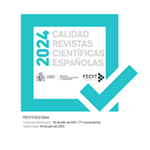Variedad sonora de las antaras nasca: ¿Un caos o el sistema?
Resumen
Las excavaciones arqueológicas realizadas en 1994 y 1995 en el centro ceremonial nasca de Cahuachi produjeron un hallazgo excepcional para los estudios arqueomusicológicos: un grupo de 27 flautas de Pan (antaras) que conformaba una ofrenda sacrificial en el templo del Sector Y13. Estudios detallados de las antaras (análisis de grabaciones directas de los sonidos y cálculos acústicos) han arrojado una gran cantidad de información sobre sus propiedades musicales/acústicas. También es posible, gracias al buen estado de conservación de los instrumentos, reconstruir su proceso de elaboración. La tecnología de producción aplicada resultó ser muy avanzada, lo cual refleja un sofisticado concepto de espacio sonoro y permite rechazar insinuaciones sobre una afinación imprecisa, torpe o caótica como consecuencia de una poco esmerada elaboración. Es más, quizá haya que reconocer que las series sonoras de las antaras ocultan en realidad un sistema de intervalos planificado con precisión y que el criterio de afinación seguido no sólo buscaba aportar valores melódicos, sino también complejas disonancias.Descargas
Descarga artículo
Licencia
La Revista Española de Antropología Americana, para fomentar el intercambio global del conocimiento, facilita el acceso sin restricciones a sus contenidos desde el momento de su publicación en la presente edición electrónica, y por eso es una revista de acceso abierto. Los originales publicados en esta revista son propiedad de la Universidad Complutense de Madrid y es obligatorio citar su procedencia en cualquier reproducción total o parcial. Todos los contenidos se distribuyen bajo una licencia de uso y distribución Creative Commons Reconocimiento 4.0 (CC BY 4.0). Esta circunstancia ha de hacerse constar expresamente de esta forma cuando sea necesario. Puede consultar la versión informativa y el texto legal de la licencia.









